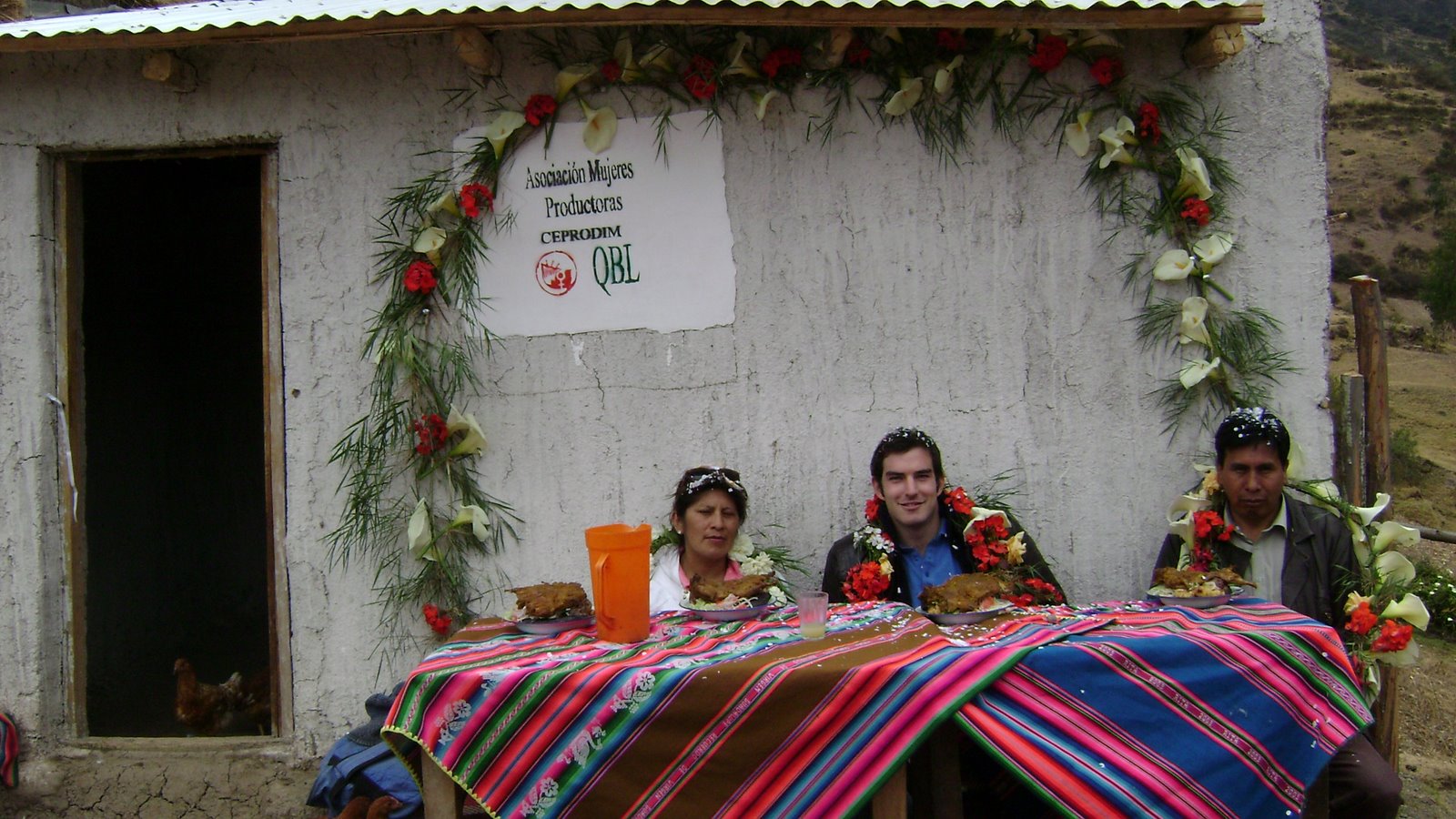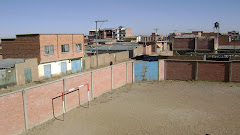This is an email I sent out to some friends and family- explains a bit of the tensions right now and thought it might be helpful in understanding some of the situation.....
It's getting exciting. If you're at all interested in latin american studies, democracy, or a host of other academic issues, this is the place to be! Just thought I'd write because it seems things here are heating up a bit. There's been violence, autonomous votes, referendums, blockades, demonstrations, miners blowing up buses, miners taking over tax offices, etc. etc. since I arrived in January. It's become almost like second nature.
Recently, however, these confrontations between the government and the pro-autonomy groups in the eastern/ northern-southern departments ( that make a half moon "media luna" of the country) have become quite violent. More or less, in Tarija, Santa Cruz, Pando, and Beni government offices are being taken by civic and youth/student groups resulting in violence between the police and between supporters of the government who are for the most part campesinos (farmers, almost always with an indigenous connotation). So far 20 state offices have been taken over and 140 roads blocked. There's talk about Hugo Chavez's promise of military support for Bolivia against these movements but also that if Venezuelan troops came into the country, the Bolivian army would have none of it. Who knows, right?
Hundreds have been injured and I heard today that 8 ( that number has since been raised to 14 which is growing) were killed in Pando, 32 injured and a number critically injured many from gunshot wounds. I'm sure there were other deaths in other conflicts and unfortunately we might assume that number will increase because of serious injuries.
Essentially what happens is that autonomous, largely urban groups sack an office or are out in the streets, then campesino associations or sindicatos grab sticks, stones, or farming tools and head to town to protect them/ to assemble. In Pando there are different versions of what happened but the government says the prefect Leopold Fernandez, (almost like a governor), and his functionaries/ members of his administration met a group of campesinos who were going to assemble in town. While the media hypes things up, it still referred to the place where this occurred as a "battle zone," and that the campesinos were "ambushed." Indeed both sides had guns, sticks, stones, and machetes. The presidential representative reported that some of the autonomous civic groups had machine guns and leaders of the campesino groups said 15 of their group were kidnapped by the Civic Committee (again, autonomous).Of course, the other side claims it wasn't their fault and they were responding to the first blow.
From what I've heard the autonomous groups are better-armed with guns. Both sides are very much ideologically aligned although the issues can be deeper than that (race, exclusion, economic interests, etc). Still, the biggest issue, as always, is the return of the IDH a national revenue generated from oil/natural gas and the recognition of the autonomous votes. Some rumors even talk about how the army/government positioned fewer and ill-equipped soldiers to defend state offices in Santa Cruz in hopes that the pro-autonomous groups would kill a soldier, giving the green light to reciprocate or to open up the possibility of martial law. Don't know if I'd go that far, but I don't know if I'd rule it out.
Evo Morales, the president, ordered the American ambassador, Phillip Goldberg, to leave because he claimed he was supporting those autonomous groups and/or fighting against democracy. The US government reciprocated, kicking out the Bolivian ambassador.For the first time I've heard people legitimately talk about the country breaking apart. There have been whispers before, but never people saying "this is point of no return." I've also been told by a couple Rotarian friends that I should keep a lower profile in the coming weeks in La Paz where, until now, things have been relatively violence-free.This, of course, is great news because I had been planning on doing a speaking tour to the other departments of the country during the first two weeks of Oct before heading out.
Now, I highly doubt I'll be able to do that- not only because most airports and main roads are blockaded but because it might get more violent. And for the first time since being here I've seriously thought about what would happen if I had to leave the country a bit early.For now, nothing has happened in La Paz and I hope nothing will. No matter what, if they could just hold off bringing the conflict to La Paz until my classes end Sept. 27th that'd be delightful. Also I've come to really enjoy a great ice cream place on the Prado called "bits and cream" where you get a mountain of ice cream with toppings and caramel for a couple bucks. A guilty pleasure- SO GOOD ( although last time I was ordering there a couple weeks ago some guy pick-pocketed my cell phone).
Things like this have happened frequently in the past few years- in Oct. 2003 the government fell and the president, Sanchez de Lozada "goni" had to flee the country to Miami where he reportedly took with him millions of dollars in briefcases he essentially took from the money he positioned for himself in the transition from state-run to privately owned enterprises. In Cochabamba there have been deadly clashes over water rights and there have been injuries over land rights in the eastern provinces.
Still, this seems like it will get worse before it gets better. The civic leaders in Santa Cruz such as Branko Marinkovic have closed dialog and opened up possibility for more pressure. Perhaps people have let their steam off, but once two sides are formed and people are killed, it's tough to reconcile an already seemingly irreconcilable issue. On that note, I'm gonna get back to school work and try to line up going to a jazz concert tonight!Hooray! Below are some articles if you're interested in a reading a bit more-Saludos
Some articles
Current
situation:http://www.laprensa.com.bo/noticias/12-09-08/12_09_08_poli1.phphttp://www.nytimes.com/2008/09/11/world/americas/11bolivia.html?_r=1&scp=1&sq=goldberg%20bolivia&st=cse&oref=slogin
one example of past conflict, not entirely dissimilar to now:http://query.nytimes.com/gst/fullpage.html?res=9E02E7D7123EF93BA25753C1A9659C8B63&scp=6&sq=sanchez%20de%20lozada%20bolivia&st=cse
a bit about how the U.S. has been involved in Bolivia besides anti-narcoticshttp://www.nytimes.com/2006/02/26/movies/26fore.html?scp=3&sq=sanchez%20de%20lozada%20bolivia&st=cse
A FAO Greenhouse

One of the members in my training group taking a look at a plot of lettuce
Another Visit With QBL

We visited the innaguration for a series of new chicken coops QBL financed in a small village in the low-lying andes mountains, 7 hours north of La Paz
Tuesday, September 16, 2008
Subscribe to:
Post Comments (Atom)









No comments:
Post a Comment